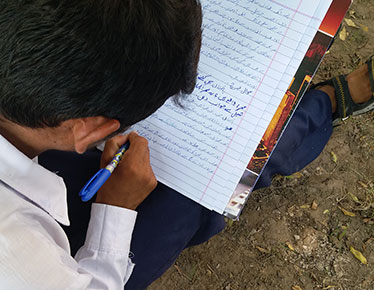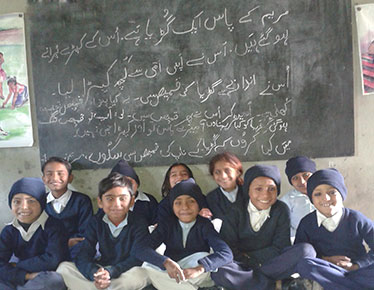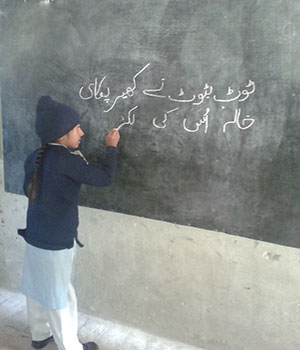 “In the early 1990s, working on women’s literacy and analyzing the reasons why women’s literacy programs end up in failure, very soon, I came to the conclusion that there were two major reasons behind. Firstly, the programs developed are blind to the learning needs of the target groups. Secondly, the method and process of making them literate is mechanical, long drawn and boring. It required years to make them literate in the real sense. As the available programs could not give them any sense of achievement the literacy centers very soon saw the learner’s backs”, says Nasira Habib, Founder of Khoj.
“In the early 1990s, working on women’s literacy and analyzing the reasons why women’s literacy programs end up in failure, very soon, I came to the conclusion that there were two major reasons behind. Firstly, the programs developed are blind to the learning needs of the target groups. Secondly, the method and process of making them literate is mechanical, long drawn and boring. It required years to make them literate in the real sense. As the available programs could not give them any sense of achievement the literacy centers very soon saw the learner’s backs”, says Nasira Habib, Founder of Khoj.
It was decided to take on the challenge and work on both the fronts. It took more than ten years to develop and fine tune a method of teaching literacy that is close to how a human child learns language, is fast track, effective and creative.
The new phonetic method is based on the conceptual understanding of how a sound is produced and how words take birth. The clear advantage lies in the fact that a learner does not have to rote learn letters of the alphabet. Teaching the names of the letters first is confusing and non-productive. We don’t talk, read or spell by saying and thinking names of letters.
Once the logic of the basis of word formation phonetically is understood reading and writing of new and unfamiliar words remains no problem.
This method does not require a learner to wait for weeks or months to start writing sentences and coherent texts. Without going through all the sounds of a given language sentence and story writing is initiated within the limits of the sounds learnt so far. Every new day, thus, gives a sense of achievement.
Making a resort to sounds minimizes the risk of wrong pronunciation and wrong spelling.
It is a fast track and time effective method. In six months a solid foundation is laid for long lasting literacy and language learning.
The new method relieves the learners of the burden of memorizing mechanically without understanding.
Though having an understanding of the sounds is a prerequisite to teaching literacy but unlike many methods of teaching through phonics the teaching is not mechanical and boring. Teaching is contextualized and rooted in the learners’ experience. Instead of taking up individual sounds one by one a series of activities are initiated. Each activity is based on the learners’ daily life experience. They go through the experienceand reach the conclusion themselves. The conclusions are not drawn for them. Instead, they are provoked to think. The whole exercise is designed from how a sound is made in the outer environment to what happen in a human being to produce a sound and subsequently a word. An activity could be as simple as the following:








